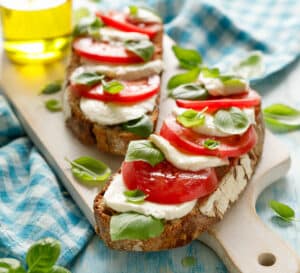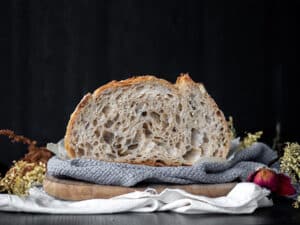Whether a fashion fad or a new dietary custom, gluten-free bread products are appealing to an increasing number of consumers in search of well-being and balance, not to mention flavour. How is it possible to find all the characteristics of traditional bread without this cereal grain protein? This is precisely the challenge facing professionals in the bakery industry.
Gluten-free goods: a worldwide consumption trend
Gluten-intolerant, or simply in search of dietary comfort? The consumption of “gluten-free” goods is far from limited to people suffering from celiac disease. Two main groups of “gluten-free” consumers have been developing for some time now:
- consumers “with a medical prescription”, diagnosed as celiac disease sufferers (a digestive pathology), whether they are intolerant, allergic or sensitive and for whom only a strict “gluten-free” diet can remedy the disorder;
- consumers “without a medical prescription”, seeking dietary comfort above all else, and who, for personal reasons, follow trends started by a handful of media celebrities.
Texture: gluten-free bread similar to classic bread
The absence of gluten affects the characteristics of bread more than for any other foodstuff. Gluten, a protein found in certain cereal grains, such as wheat, rye or barley, plays a key role in the manufacture of bread. Due to its viscoelastic properties, it allows the dough to rise by retaining the carbon dioxide produced by the yeast. Without gluten, the dough remains liquid and a baking tin is required, the loaf loses its sensory characteristics and finally keeps less well. The challenge facing professionals in the bakery industry is therefore to develop “gluten-free” bread that is as attractive in terms of texture and taste as traditional bread containing gluten.
DTS, a sensory method for analysing the perception of texture in bread…
In order to help its bakery customers improve their recipes, Lesaffre has developed a special sensory analysis method. This method helps bakers gain a better understanding of what happens in the mouth when eating “gluten-free” products in order to overcome consumption barriers. Referred to as Temporal Dominance of Sensations (TDS), this analysis relies on tasting tests to constantly assess the changes in organoleptic properties from the moment the product is placed in the mouth through to the act of swallowing the bread. This is done according to eight texture descriptors: soft, melt-in-the-mouth, viscous, moist, sandy/crumbly, dry, quick to chew and sticky.
Gluten-free bread: the texture challenge!
Using the DTS method, our expert panellists firstly compared a classic wheat flour loaf (containing gluten) with a “gluten-free” loaf representing the market standards. The results of the test are presented in a simplified graph form below in order to underline the dominant perceptions noted. A simplified presentation of the results was developed to aid an understanding of the general principle. The size of the “⁄Descriptor⁄” block is proportional to its dominance.
While a classic loaf is perceived as soft when it is first placed in the mouth, then sticky, a “gluten-free” loaf remains viscous before rapidly drying out: bakery experts were then able to focus on new texturizing ingredients to improve the “softness” of a “gluten-free” loaf.
New challenges for improving gluten-free bread
Smells, aromas: ascertaining the taste of a good loaf. While, on a sensory level, texture is one of the major assessment criteria in a bakery product (and reason for repeat purchases), it is nevertheless important not to disregard flavour, which is just as decisive for consumer satisfaction. Similar to the work conducted on texture using the TDS method, it is also possible to highlight the weak points of a “gluten-free” loaf in regard to flavour and therefore target the upstream actions needed to remedy any problems.
Industrial expertise helps to remedy the disadvantages in making “gluten-free” bread. With regard to process, malleability and baking, not to mention the shelf-life of “gluten-free” products, certain problems need to be remedied. Dough that is liquid, sticky and difficult to work with is no encouragement for bakers wanting to offer their customers “gluten-free” bread!
Texture, taste and performance: Lesaffre opts for gluten-free!
By aligning products with or without gluten in terms of smells and aromas, Lesaffre has improved its “gluten-free” recipes to introduce the aromatic characteristics so typical of traditional bread, mainly due to the inclusion of ingredients such as natural sourdough, improvers or starters.
On the process side, Lesaffre’s R&D experts and Baking Center™ technicians are able to resolve machinability problems specific to “gluten-free” bread by proposing a wide range of technical solutions that not only cater to texture and taste, but also to the working of the dough.
“Gluten-free” bread consumers can therefore now enjoy a round loaf with an appetizing crust, with a soft, melt-in-the-mouth crumb, laden with aromas and which preserves its properties intact for several hours.




